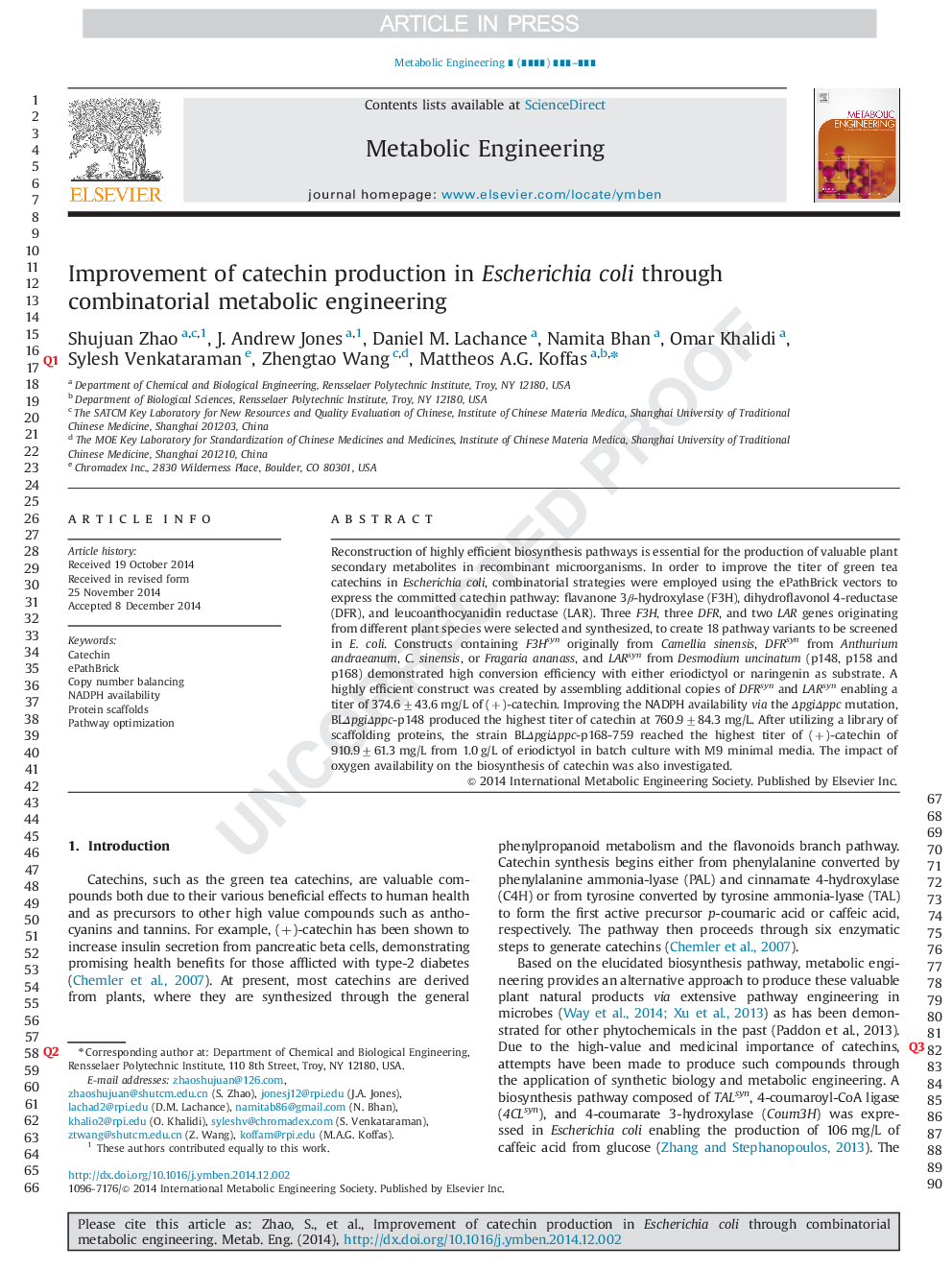| Article ID | Journal | Published Year | Pages | File Type |
|---|---|---|---|---|
| 6494442 | Metabolic Engineering | 2015 | 11 Pages |
Abstract
Reconstruction of highly efficient biosynthesis pathways is essential for the production of valuable plant secondary metabolites in recombinant microorganisms. In order to improve the titer of green tea catechins in Escherichia coli, combinatorial strategies were employed using the ePathBrick vectors to express the committed catechin pathway: flavanone 3β-hydroxylase (F3H), dihydroflavonol 4-reductase (DFR), and leucoanthocyanidin reductase (LAR). Three F3H, three DFR, and two LAR genes originating from different plant species were selected and synthesized, to create 18 pathway variants to be screened in E. coli. Constructs containing F3Hsyn originally from Camellia sinensis, DFRsyn from Anthurium andraeanum, C. sinensis, or Fragaria ananass, and LARsyn from Desmodium uncinatum (p148, p158 and p168) demonstrated high conversion efficiency with either eriodictyol or naringenin as substrate. A highly efficient construct was created by assembling additional copies of DFRsyn and LARsyn enabling a titer of 374.6±43.6 mg/L of (+)-catechin. Improving the NADPH availability via the ÎpgiÎppc mutation, BLÎpgiÎppc-p148 produced the highest titer of catechin at 760.9±84.3 mg/L. After utilizing a library of scaffolding proteins, the strain BLÎpgiÎppc-p168-759 reached the highest titer of (+)-catechin of 910.9±61.3 mg/L from 1.0 g/L of eriodictyol in batch culture with M9 minimal media. The impact of oxygen availability on the biosynthesis of catechin was also investigated.
Related Topics
Physical Sciences and Engineering
Chemical Engineering
Bioengineering
Authors
Shujuan Zhao, J. Andrew Jones, Daniel M. Lachance, Namita Bhan, Omar Khalidi, Sylesh Venkataraman, Zhengtao Wang, Mattheos A.G. Koffas,
